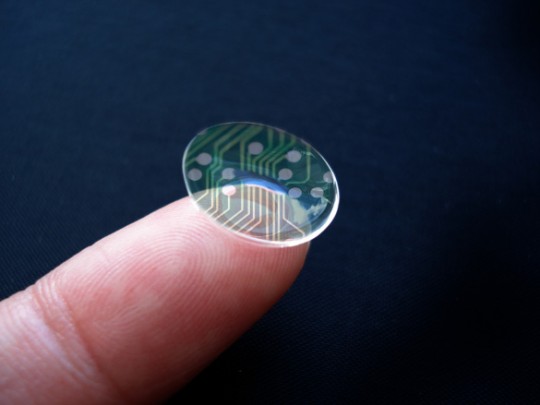LED blinking relative to potentiometer resistance.
FSR leds
Fantasy Device:
Contact Lens HUD
Something I'd like to see would be some sort of contact lens that would use some kind of micro (or nano?) computing interface as well as a physical interface that might track eye movement as an input and project various data over what a person would normally see without impeding vision (the projections might be transparent for example). I imagine that by using something like augmented reality, these could be used to project data pertaining to certain physical locations, etc.
Something I'd like to see would be some sort of contact lens that would use some kind of micro (or nano?) computing interface as well as a physical interface that might track eye movement as an input and project various data over what a person would normally see without impeding vision (the projections might be transparent for example). I imagine that by using something like augmented reality, these could be used to project data pertaining to certain physical locations, etc.
Sensors encountered over the past week:
Most of the sensors that i took notice of were ones that I directly interacted with, some were even hard to distinguish due to being so acclimated to using them.
card readers - atm, nyu building turnstiles, subway turnstiles, metrocard machines.
pushbuttons- soda machine, atm, laptop keys, camera shutter release, crosswalk button, doorbell
touch-interfaces - phone, atm, smartboard, metrocard machine, creditcard machine.
motion-sensitive - sliding doors, lights in batrhoom



